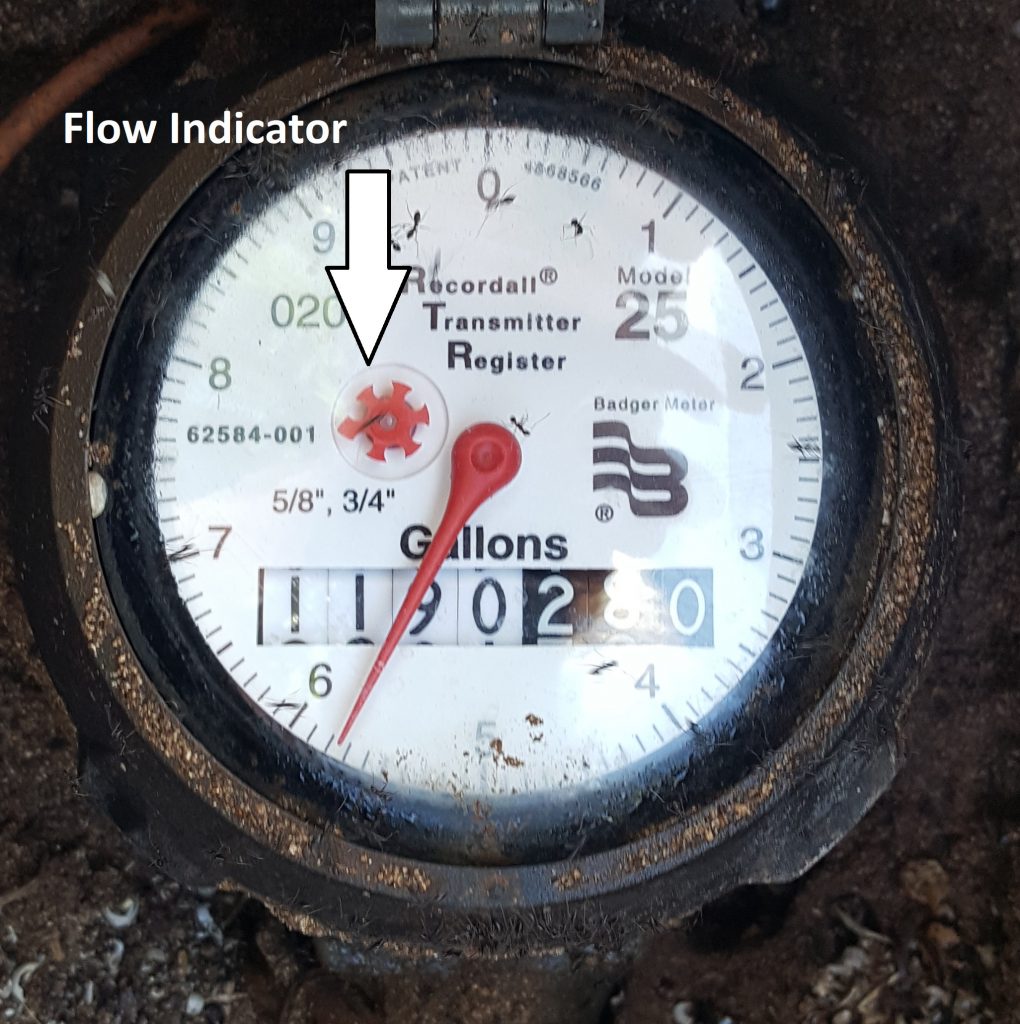4.2 Domestic Water Service
Potable Water
Often referred to as drinking water or domestic water, potable water is water that is considered to be safe for human consumption. Plumbers and maintenance technicians should always be aware of the potential for contamination of potable water systems and guard against it when installing, opening, and repairing these vulnerable systems.
Plumbing codes are very specific about maintaining the integrity of potable water systems to be free of harmful contaminants to protect the health and well being of individuals that rely on them. If a water service is installed in the same trench as a drain or sewer, the possibility of back-flow could occur. To protect against this, codes regulate the installation of a water service in the same trench with or within a certain distance of waste system piping. Most codes require that a water service installed at the same elevation as a sewer must be separated from the sewer by at least 5’ of undisturbed or compacted soil (This code often dictates that a separate trench is to be excavated). Additionally, lead-free regulations now affect how brass, bronze, copper, and other metal fittings and components are made and the solders that are used to assemble some of them.
Specialty Tools
Specialty tools often make tasks easier to perform and there is no shortage of specialty tools in the plumbing field. Many are specific to a particular manufacturer, while other perform functions that are relative to the plumbing field.
Water Meters
Water meters are used by municipal water systems to monitor and record water usage for billing purposes. Most in-ground water meters are secured in a meter box that requires a specially shaped forged key (available at specialty plumbing supply vendors) to open. Every water meter has a direction of flow and an arrow indicating which side is the incoming or outgoing connection. A municipal shut-off valve located before the meter (inlet side) normally has a rectangular shaped lock-out device that can be turned on or off with a fitted T-handle device or open end wrench. Turning this valve to the off position allows for the water supply to the entire property the meter services to be cut off and for the meter to be removed or serviced. A ball or gate valve should be installed in a valve box located outside of the meter box on the outlet side for customers or service technicians to access in order to shut off water service in the event of an emergency.
Water Meter by Clifford Rutherford is licensed under CC BY 4.0
Checking for Leaks With a Residential Water Meter:
Be sure all faucets and hose bibs in the residence are turned off.
Ensure that nobody will be flushing the toilets.
Turn off supply line to refrigerator ice makers and water dispensers.
Watch to see if the small flow indicator dial on the meter is turning.
- If the indicator appears to be stopped, make a temporary marking that indicates the position of the flow indicator dial and wait 5 minutes to see if the indicator moves.
- If the indicator is turning on initial inspection, or has moved within 5 minutes of being marked at a fixed position, and nobody in the residence is using the water:
- Turn off supply water to any water features one at a time including: spas, swimming pools, and ponds; checking the flow indicator between each one. If the indicator on the meter ceases to turn after turning off a particular water feature, check the supply valve/float valve or filling system of that feature for leaks.
- Turn off angle stops at toilets one at a time and check the water meter flow indicator to see if it has stopped moving between turning off the supply at each toilet. If the indicator ceases to turn after turning off a particular toilet’s angle stop, follow procedures for troubleshooting toilet fill and flush valves in that toilet.
If all of these procedures have been performed and the flow indicator dial continues to turn, it is possible that there is an underground, under-slab, or in-wall leak. As in-wall leaks are usually apparent, it is more likely that leak would be in the ground or under-slab and a professional licensed plumber should be consulted.
Residential Piping
Rough-in water supply piping is usually installed after the completion of the drainage and vent piping because the water piping system consumes less space in walls and ceilings. The drainage and piping must be installed with specific fittings and in certain positions to allow the water to flow by gravity, and water supply system installation requirements are less rigid than drain, waste, and vent systems.
System Pipe Size Requirements
While the International Plumbing Code (IPC) and the Uniform Plumbing Code (UPC) differ slightly in their pipe sizing allowances, both use similar criteria for the sizing of piping systems. The sizing of an entire system is established based on the quantity and type of fixtures being served, and designed based on the maximum GPM or per flushing cycle of a particular fixture and then calculated as per all the fixtures.
| Fixture | UPC Smallest Size | IPC Smallest Size |
|---|---|---|
| Bathtub | 1/2" | 1/2" |
| Large Capacity Bathtub | Not Identified | 1/2" |
| Bathtub 3/4" Fill Valve | 3/4" | Not Identified |
| Bidet | 1/2" | 3/8" |
| Dishwasher | 1/2" | 1/2" |
| Hose Faucet | 1/2" | 1/2" |
| Kitchen Sink | 1/2" | 3/8" |
| Laundry Sink | 1/2" | 3/8" |
| Lavatory Sink | 1/2" | 3/8" |
| Single Shower Head | 1/2" | 3/8" |
| Toilet | 1/2" | 3/8" |

